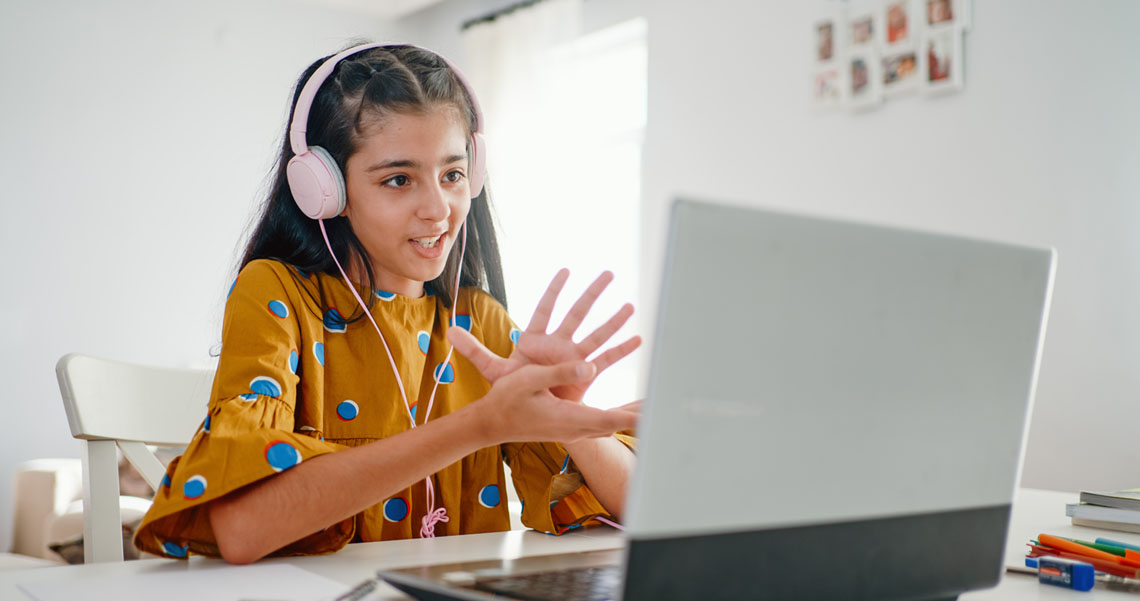Minds On
Effective messaging

The following video is a TVOKids News episode about "Pepper the Robot."
As the video plays, consider the following:
- How does the host connect to the audience? Who is the audience? How can you tell?
- How does the host assist the audience in understanding the information shared?
- How is the information shared and why would this audience connect to the information?
Record your ideas in an audio recording, on paper, on a computer, or discuss with a partner.
You can explore the video more than once.
This video contains some interesting information about how Pepper is used in the hospital setting. Use these question starters to ask questions about information shared in this video:
- How…
- Why is…
- When could…
- How do we know…
Action
Effective communication

Hosts of television programs are trained in the art of communication. This includes both adult hosts as well as hosts who are young adults, and even young children. These hosts are aware of their audiences, connect to them, and communicate their messages in effective ways.
The video on Pepper the Robot was a short clip but it had some complex information included. Information on coding, how the robot can prepare students for procedures, and why and how Pepper connects with children was all shared in less than 3 minutes.
When communicating messages through oral texts, both the authors of the text and the person or group who delivers the information need to ensure that they are connecting to their audience and delivering their text for that audience.
What makes this communication effective?
Let’s explore these ideas! Alex is a child reporter who works for TVO. He is going to share information about how to play sledge hockey.
As you explore Alex’s message, return to the three points of effective communication and evaluate Alex’s video. Use the checklist to check the effectiveness or use a method of your choice.
Effective Communication:
Based on your checklist, did Alex effectively deliver the message to the intended audience? Support your ideas with examples.
Asking questions

Sometimes when we explore a text, we make the connections and enjoy the text, but the information is more complex or new to us. Sometimes we are left feeling confused or wondering what the text means. Asking questions is a strategy that assists us in understanding new content in these situations.
There are different types of questions we can ask that will help us understand new or complex information. These questions include fact-finding questions such as who, what, when, where, why, how. They also include judgment questions that require more exploration into the topic.
Using the Question Starter Chart, or a method of your choice, match up a question word along the top with one along the left and use those two words to start a question about what you would like to ask.
For example, who did…? or when might…?
Press the ‘Activity’ button to access Question Starter Chart.
Explore the video about static electricity. After the video, work with a partner if possible, or independently, to create questions about the information using the Question Starter Chart. Create a total of six questions using any combination you wish.
Record your questions using a method of your choice.
Consolidation
Bringing it all together

Now it is your turn to find an oral text that you wish to explore in more detail. Here are some suggestions:
- a spoken word poem
- an audiobook
- a book
- a presentation
- a song
- an interview
- an article
- a video
- a short debate or persuasive piece
- a speech
- another form of text not listed
Use the checklist to discuss the three elements of effective communication and explain how you know that this oral text is effective. Then return to the Question Starter Chart and create three questions that you have about the information shared in this text.
Effective Communication:
Press the ‘Activity’ button to access Question Starter Chart.
Reflection
As you read through these descriptions, which sentence best describes how you are feeling about your understanding of this learning activity? Press the button that is beside this sentence.
I feel...
Now, record your ideas using a voice recorder, speech-to-text, or writing tool.